ALONG THE COASTLINE IN JULY - Part Two (The final part)
After some days spent posting mostly more recent or even contemporary stuff, it's time to continue an old summer walk across the coastal meadows ...
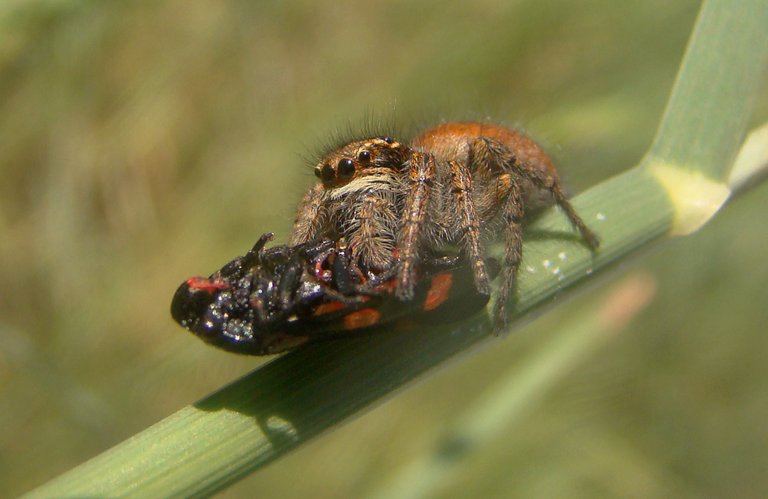
... in July 2016. This small fuzzy jumping spider ...
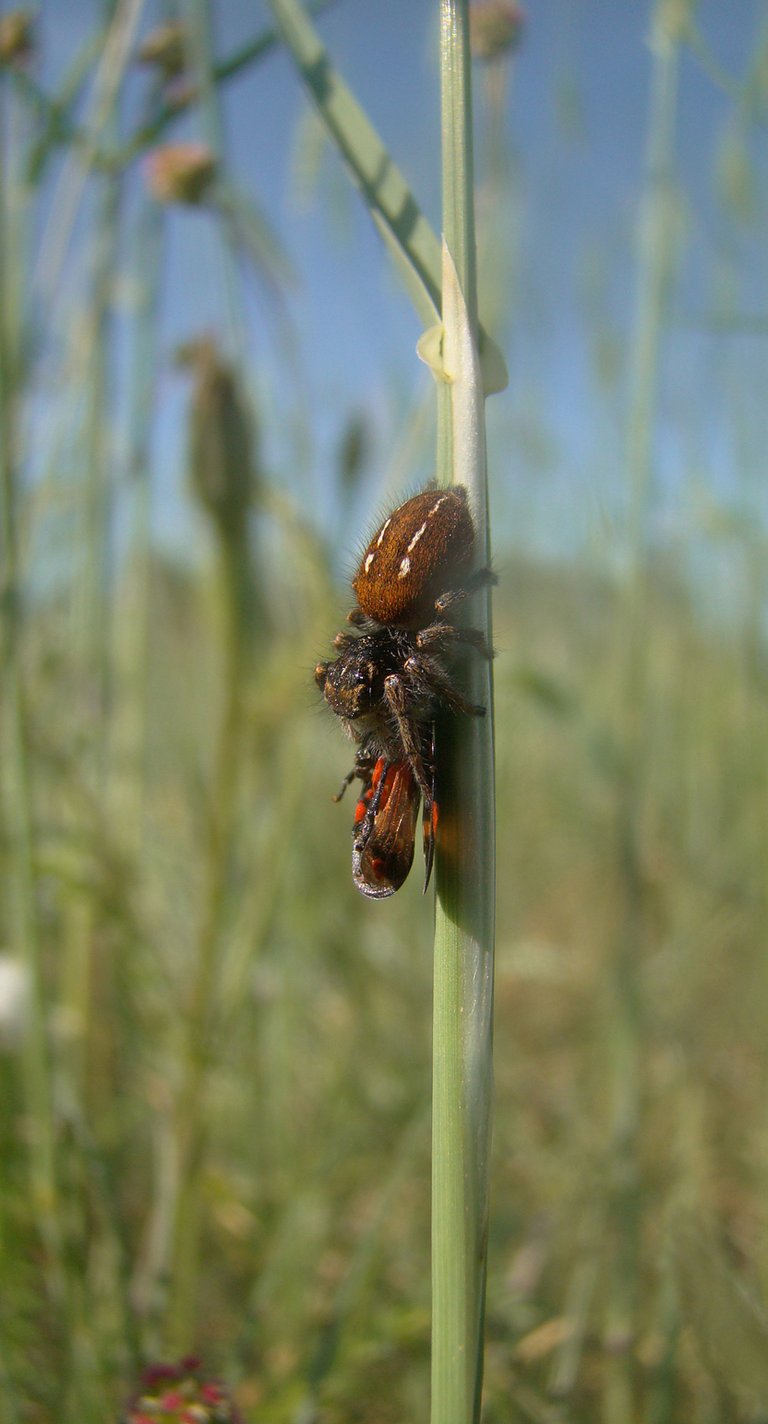
... has caught a froghopper. I don't know the exact species of the spider, but his victim is definitely the very common Cercopis vulnerata.
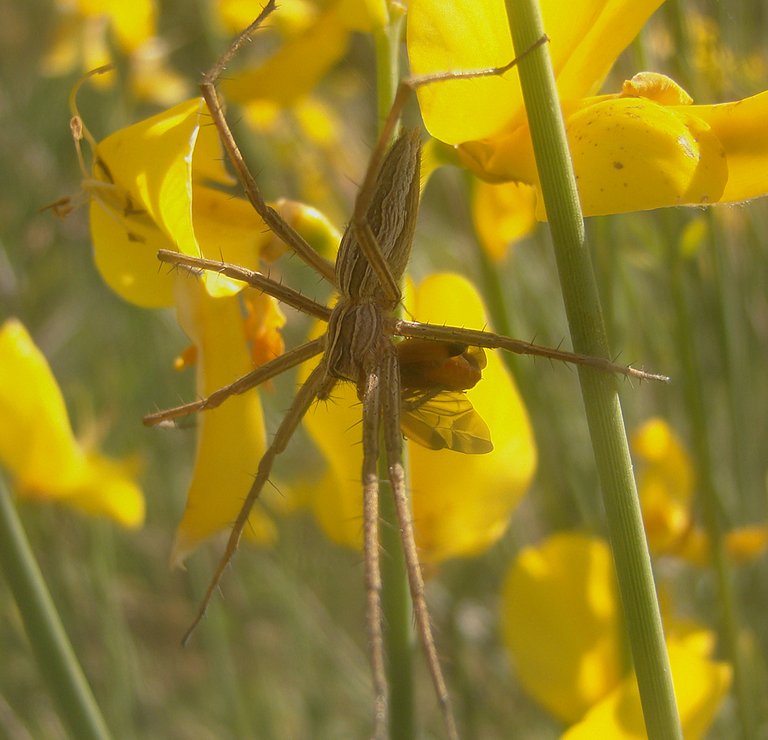
This very different spider, the Pisaura mirabilis ...
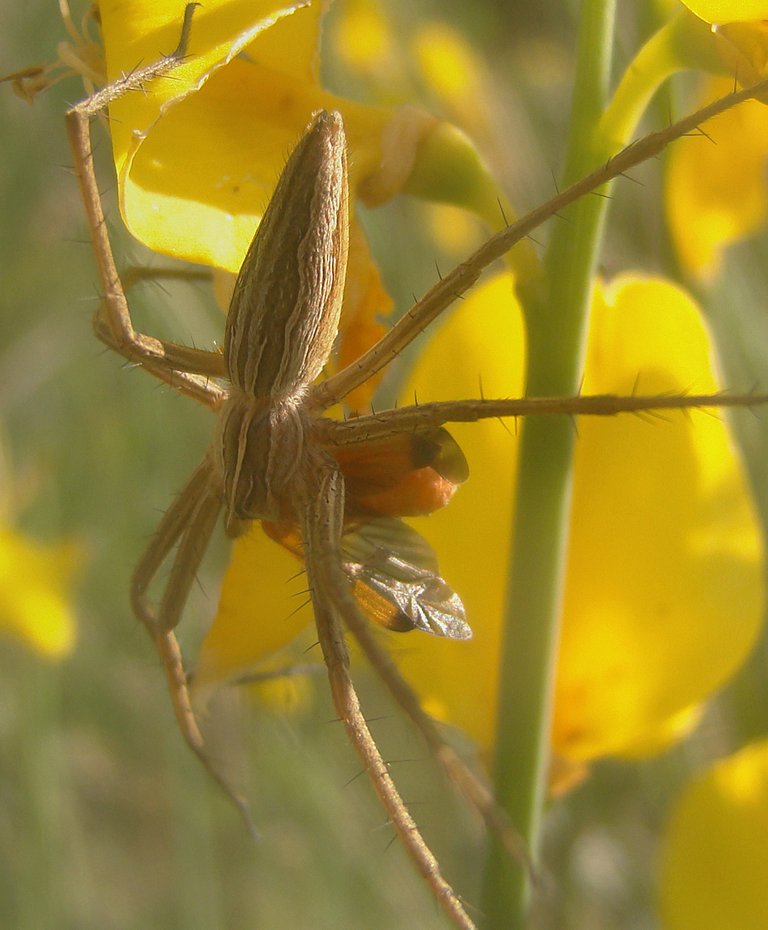
... among the yellow flowers of the Spartium junceum plant, has caught a Common red soldier beetle, the Rhagonycha fulva.
Here you can see this beetle alive, while feeding on aphids ... and on the following photograph ...
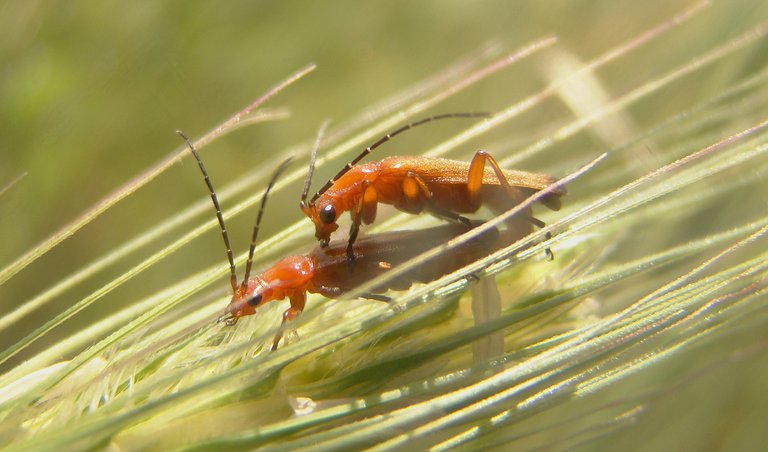
... you can see a mating couple.
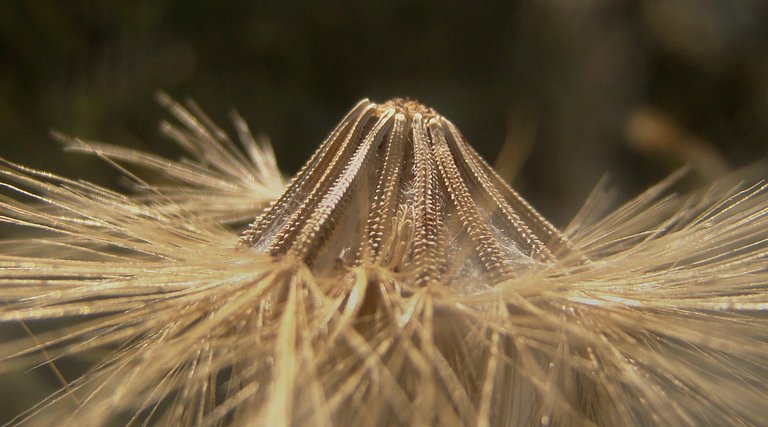
This is an up close look at the dandelion - like seeds ...
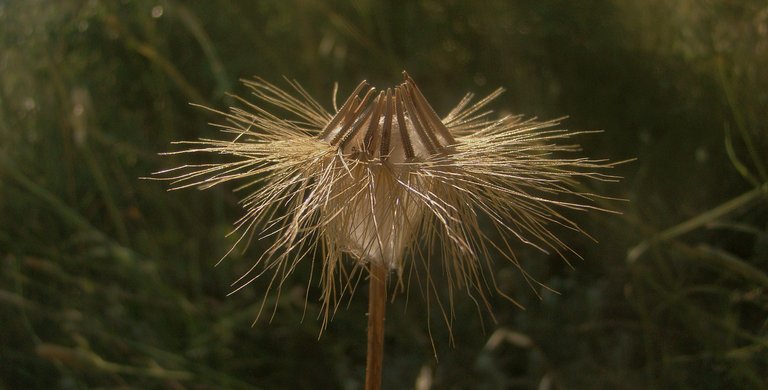
... of the Urospermum dalechampii plant, that looks like some giant dandelion - like thing.
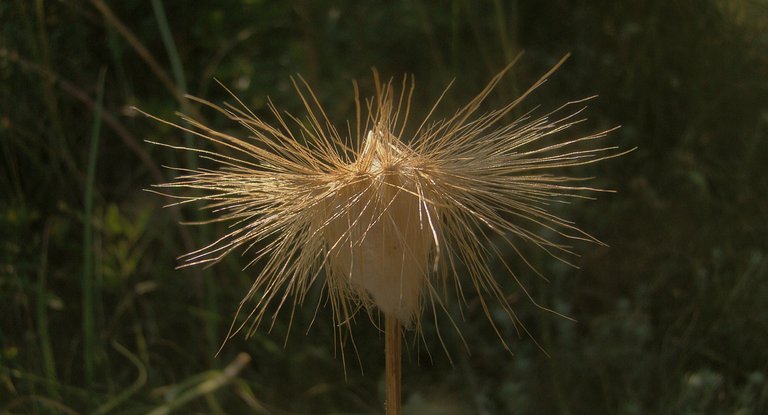
Here you can see the same thing from a slightly different angle ... and on the following shot ...
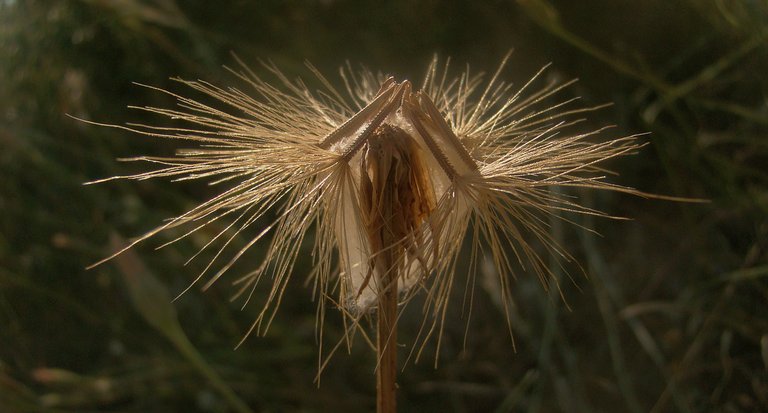
... I removed some seeds, so the central part of the structure, with the desiccated remains of the flower is clearly visible.
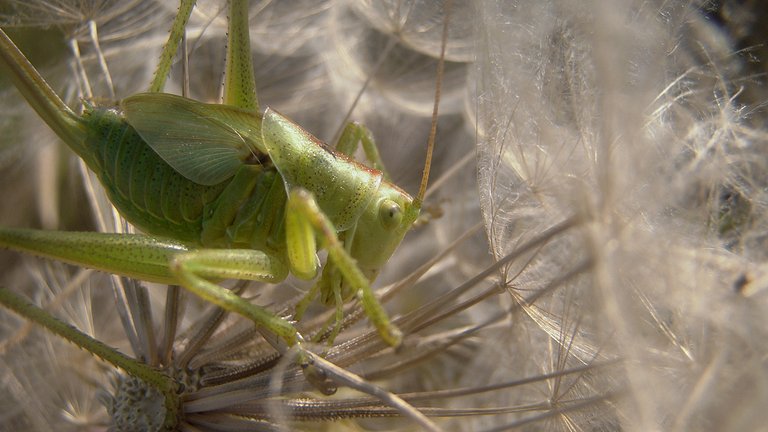
Here you can see the large nymph of the Tettigonia viridissima bush - cricket hiding among the seeds of another dandelion - like plant. The Tragopogon dubius ... that in this seeding phase looks exactly like some very big dandelion.
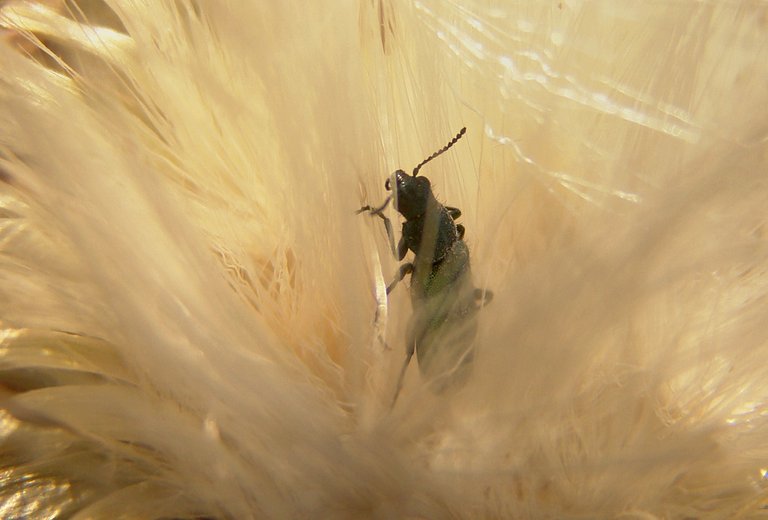
This very small beetle, the Psilothrix viridicoerulea ... is hiding among the much smaller fluffy seeds of the Cirsium arvense thistle.
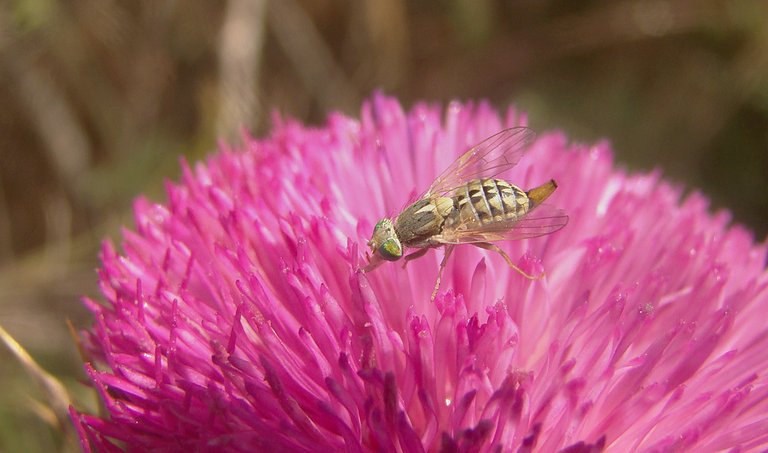
Here you can see an interesting fruit fly, the Terellia serratulae on a considerably larger flower of the Carduus acanthoides thistle. The females deposit eggs into the opened flower heads of quite a few thistle species.
This is a photograph of the same kind of thistle flower ... but at a different stage of its development ... and you can see two insects resting on it ... the Tettigonia viridissima nymph and the Agapanthia cynarae long horn beetle.
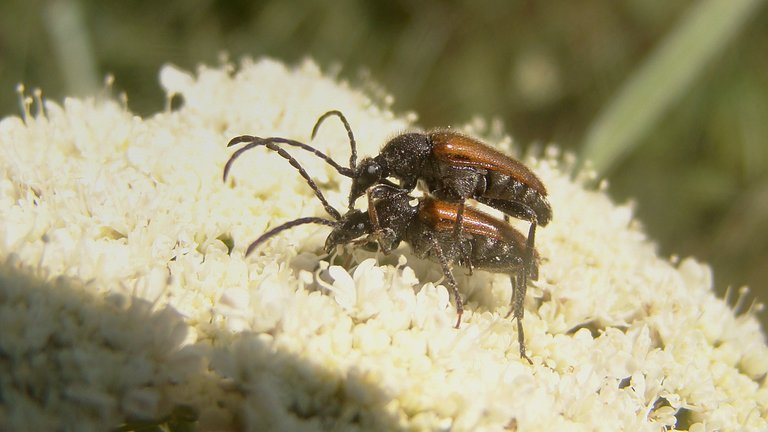
Here, on the composite flower of the Oenanthe pimpinelloides plant, you can see a mating couple of the Pseudovadonia livida long horn beetles.
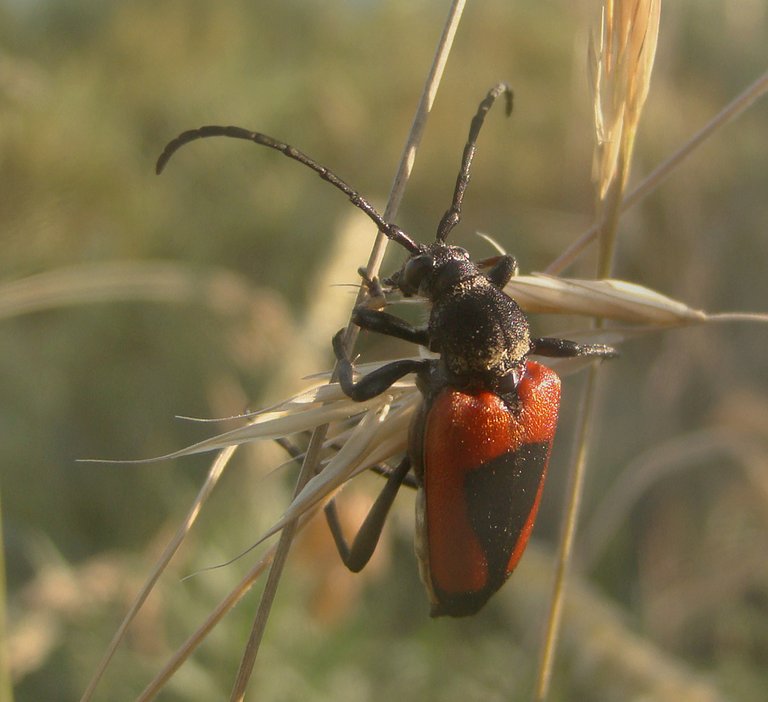
This colorful long horn beetle with an elegant red & black design on its elytra ...
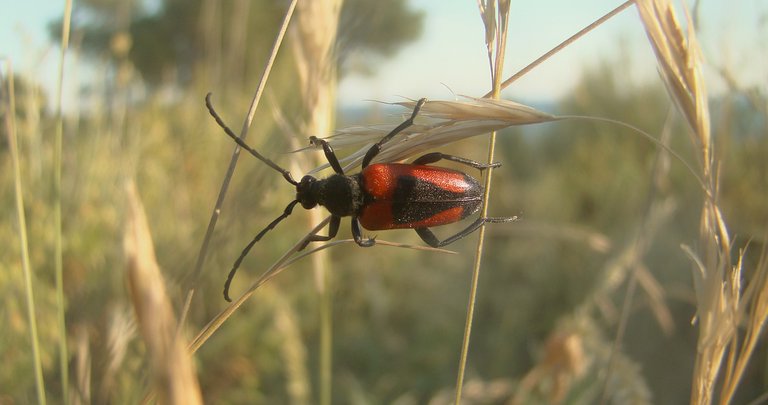
... is the Stictoleptura cordigera. Larvae of this species are feed and develop in rotten wood of deciduous trees, especially in Quercus ilex, one of the most common small, shrub - like trees that grow on the border of meadows in this seaside landscape.

Through these tree shots you can follow the beetle taking flight.
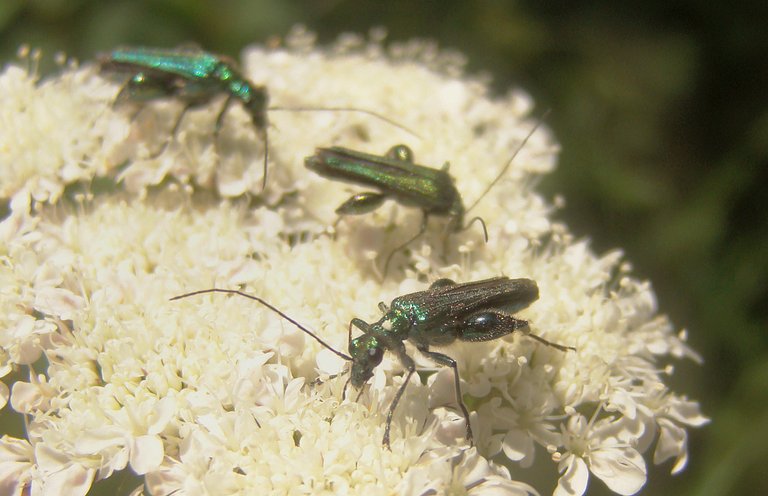
Here you can see a line of three Oedemera nobilis beetles feeding on nectar and pollen of the Oenanthe pimpinelloides flower.
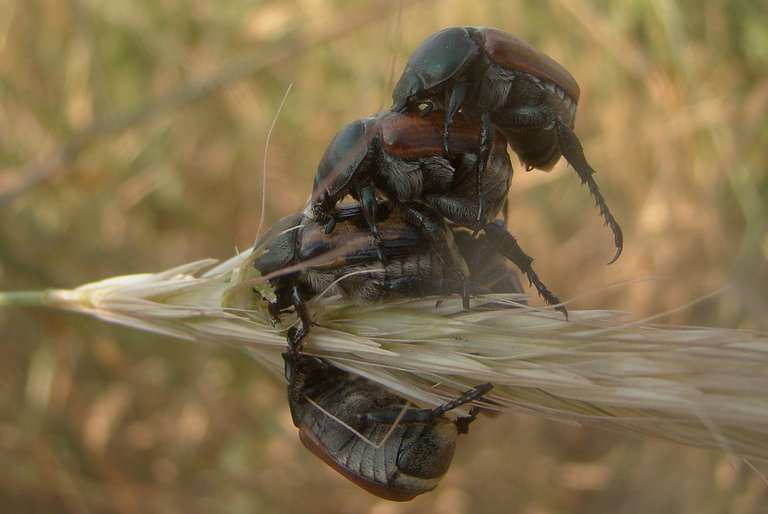
This chafer beetle from the Anisoplia genus of the Scarabaeidae family was already introduced in the first part of this two - part thing ... and now, here ...
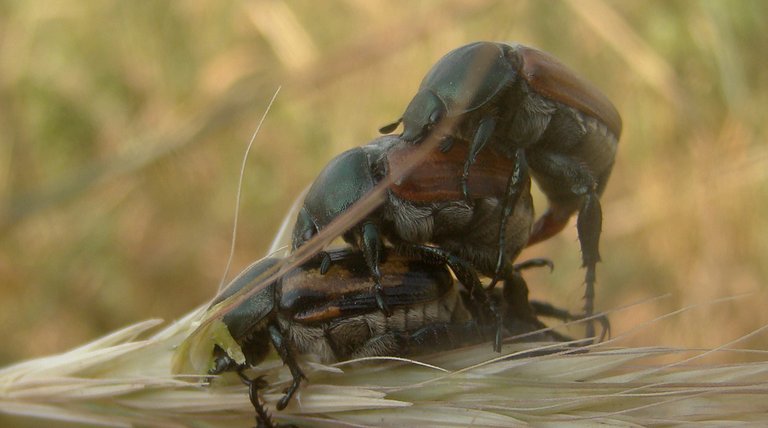
... you can observe the typical mating behavior of this species ...
... on the ear of Hordeum marinum grass.
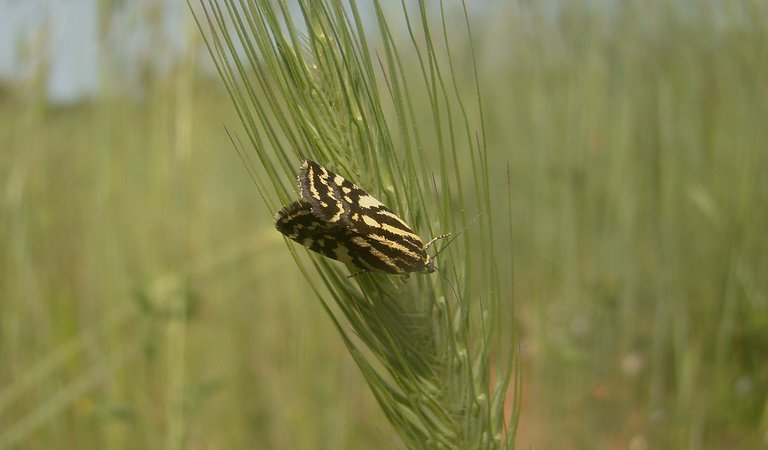
This small moth, I don't know the exact species, is resting on the greener version of the same grass.
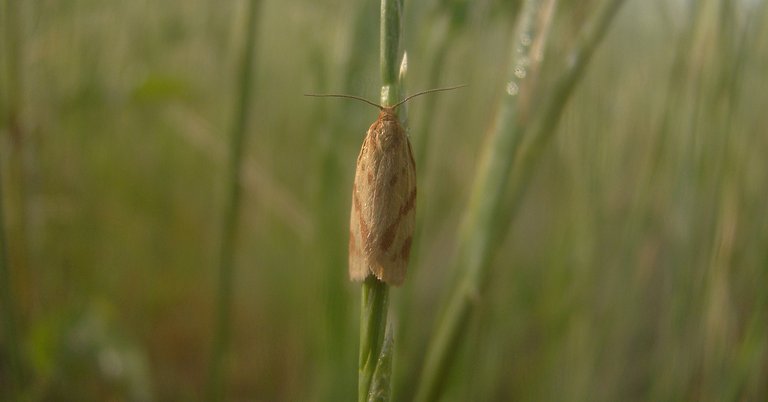
This is the Clepsis pallidana moth ... another very small species, a common encounter on these meadows.

Here, again on the ear of the Hordeum marinum grass, is another beetle ... a weevil this time ...
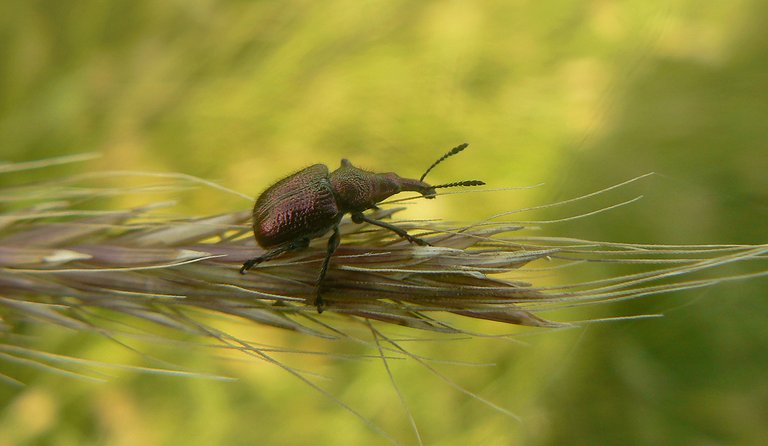
... the Rhynchites bacchus.
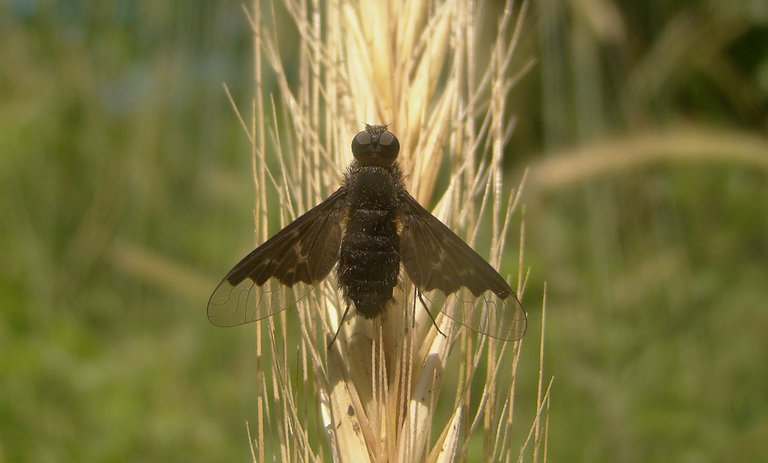
This interesting fly from the Bombyliidae family has nicely decorated wings ... and was also caught on Hordeum marinum grass.

This small bee, I don't know the species, is resting on a different kind of grass ... the Bromus squarrosus.
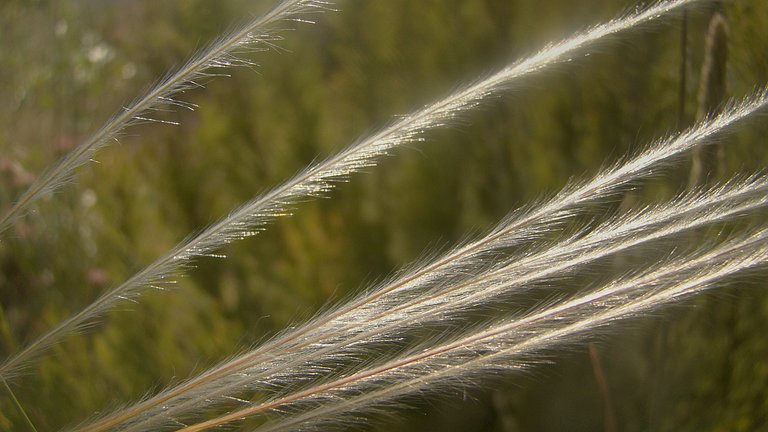
This is a detail of some elegant, feather - like grass … I don't know the exact species.
The Libelloides macaronius, a Neuropteran insect on this photograph is also resting on the top of some grass.
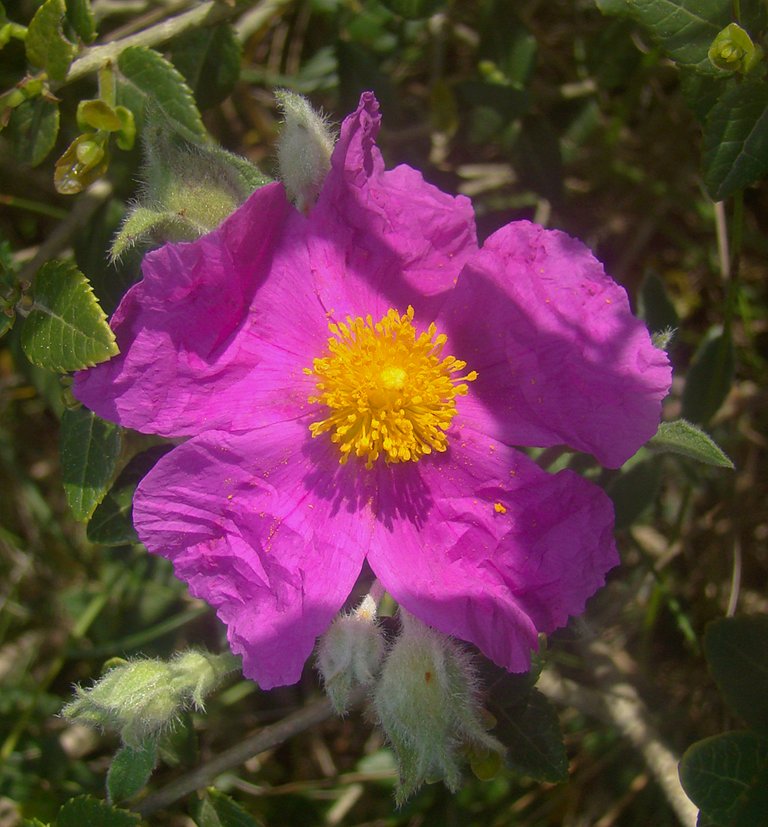
This is the lovely flower of the Cistus albidus plant, one of the shrubs that grow along the border of the meadows.
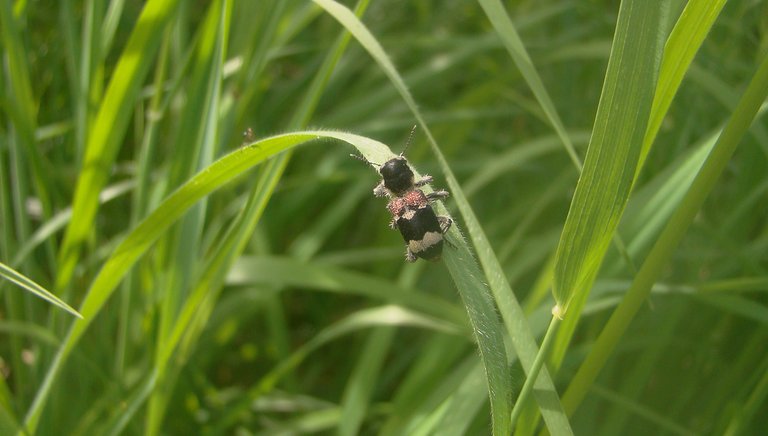
This is the Clerus mutillarius ...

... a small predator that I rarely encounter.
Here you can see some interestingly contorted Plantago lanceolata plants.
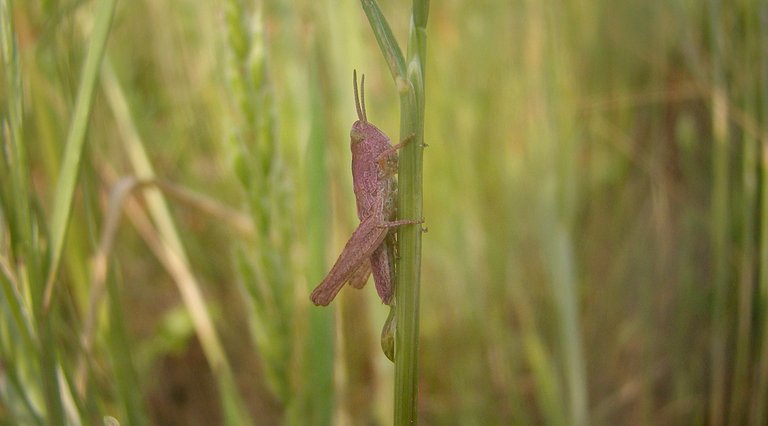
This is an interesting pinky grasshopper nymph ... I don't know the exact species.
Here you can enjoy a pattern made of Anthemis arvensis flowers by the dusty road that leads along the coast.
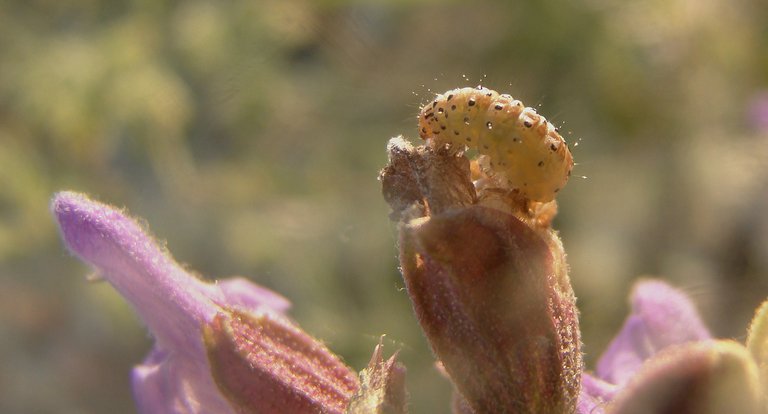
Here you can take a look at some small caterpillar ... I have no idea about the species.
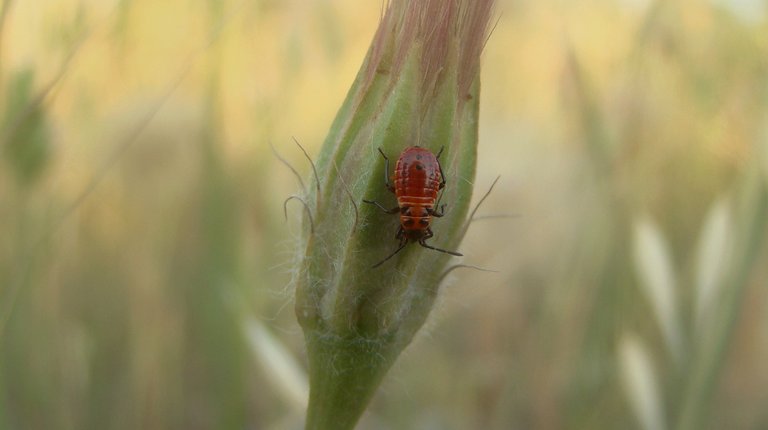
This is a small nymph of the very common and numerous Pyrrhocoris apterus firebug.
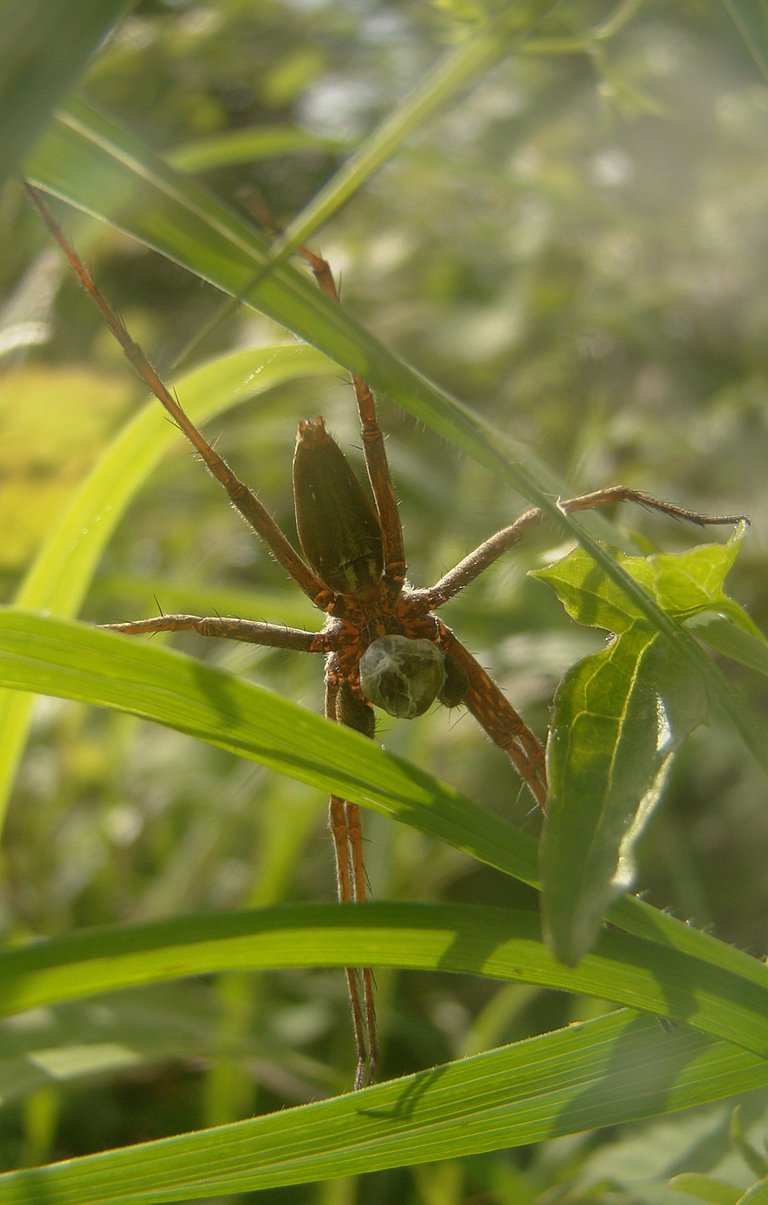
Here you can see a female Pisaura mirabilis spider ... and she's carrying a little cocoon.
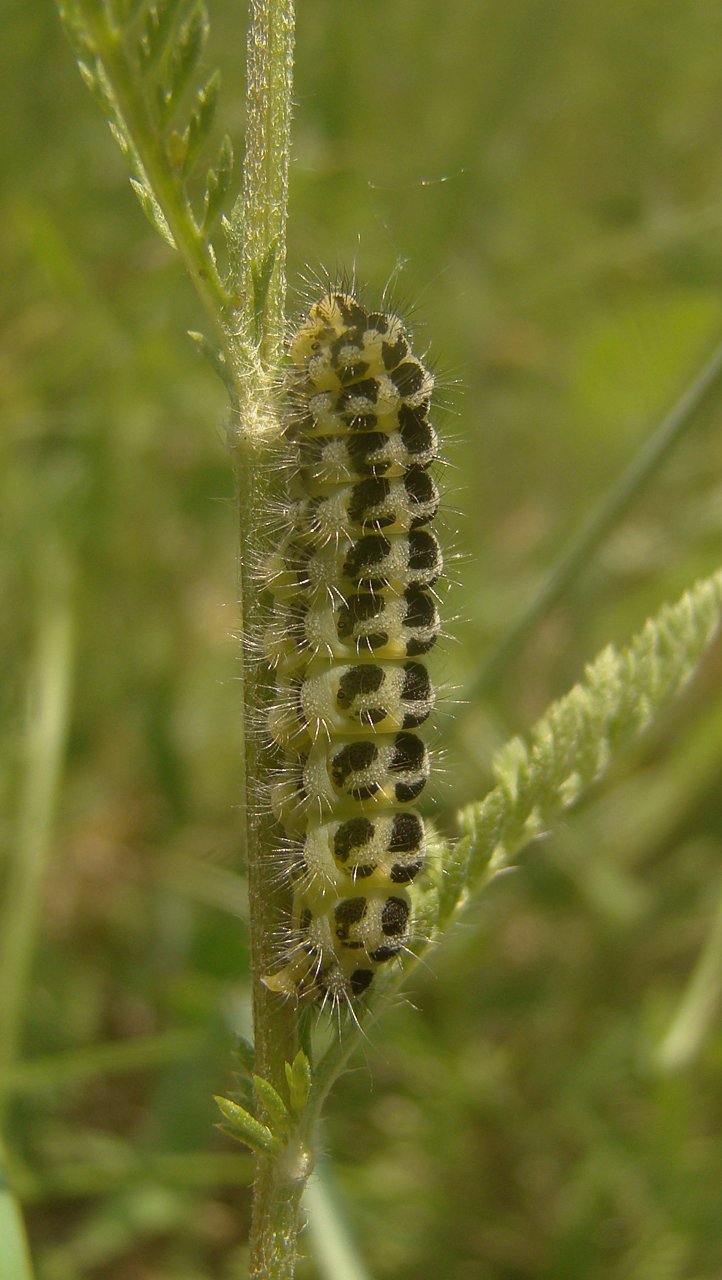
This is the caterpillar of the diurnal Zygaena filipendulae moth ... you can see the adults of this species in part one of this coastal collection ... and something like that can be said for the caterpillar on the following photograph as well ...

... the larval version of some fritillary butterfly ... if not exactly of the species you can see in part one ... of some similar butterfly for sure.
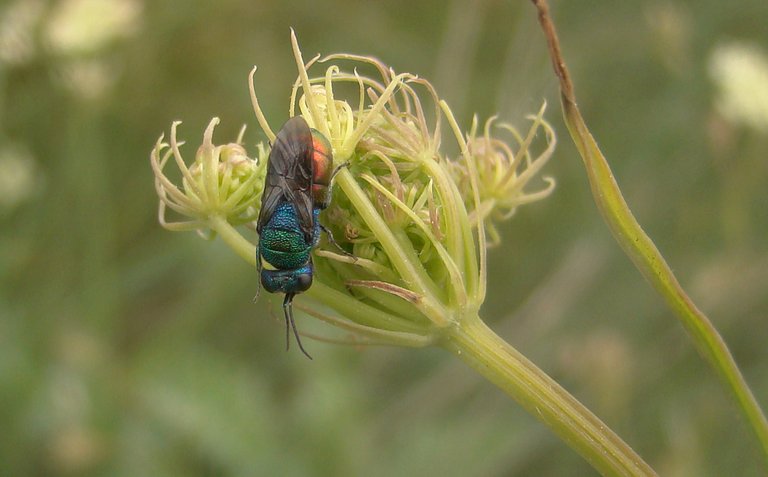
This is the small Chrysis ignita wasp ... very shiny and colorful.
Here you can see a very different kind of wasp ... the much bigger Polistes gallicus paper wasp.
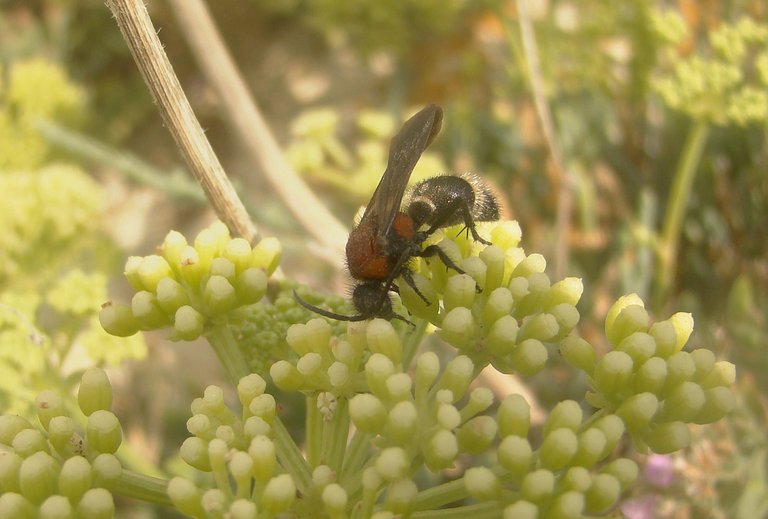
This is the winged male of the Mutilla europaea ... Mutillidae is a pretty peculiar family called also velvet ants ... females are wingless and look like big hairy ants ... I often see females of this species crawling across the stony dusty terrain near the sea ... but hey run and hide fast, so I never had an opportunity to take a good clear shot with the camera.
This is the Centrotus cornutus planthopper ... and now ...
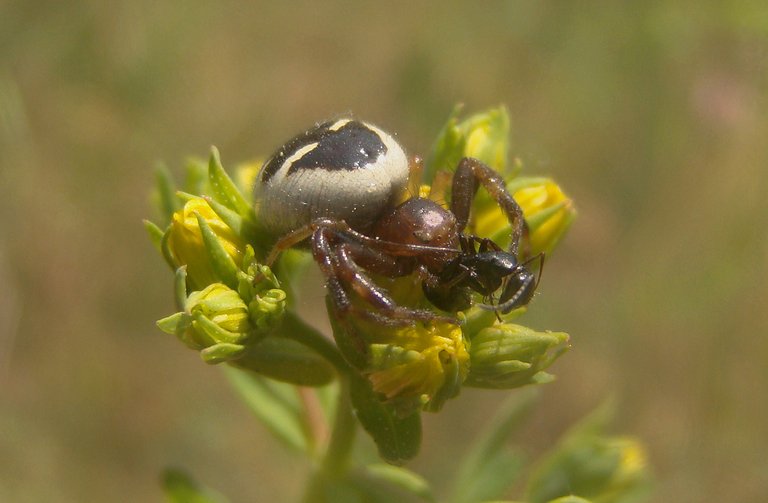
... with this Synema globosum crab spider that has caught an ant ...
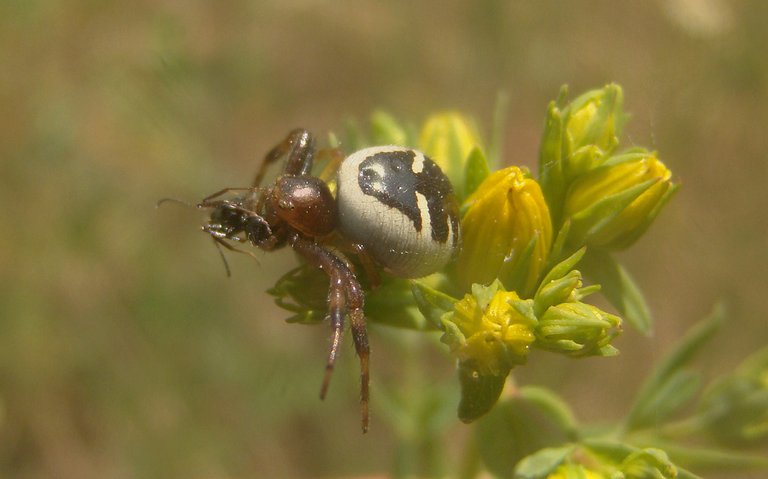
... is time to end this relatively long, two - part summer walk in search of plants, insects and spiders from my Southern Europe area ... as always in these posts on HIVE, all the photographs are my work - THE END.
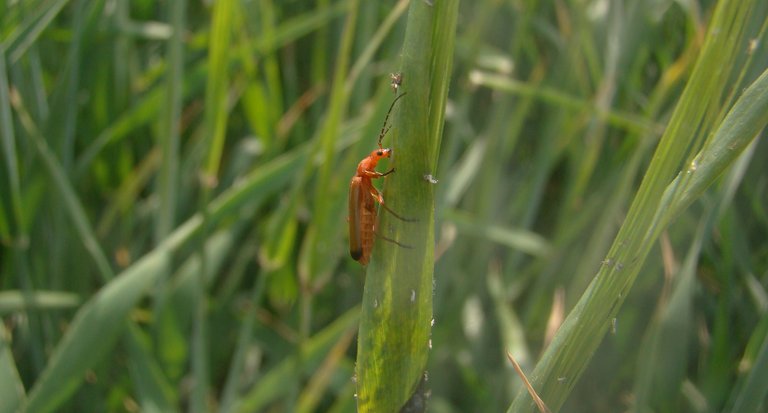

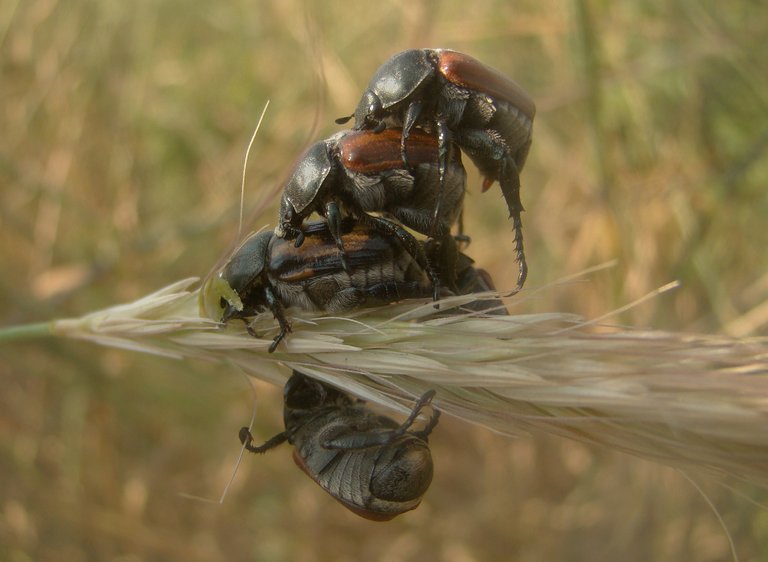

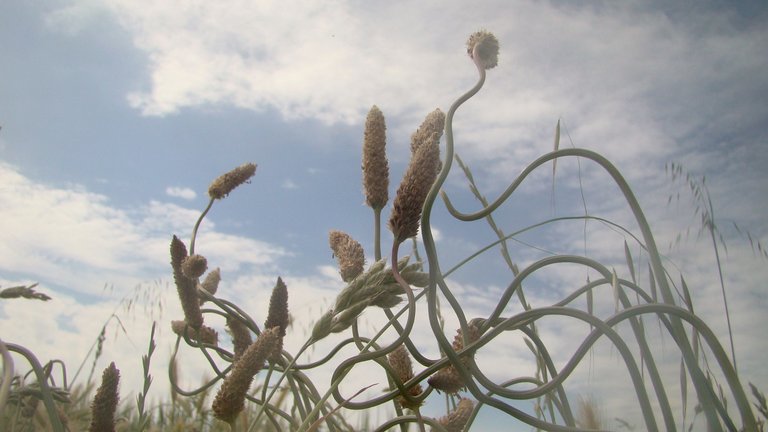
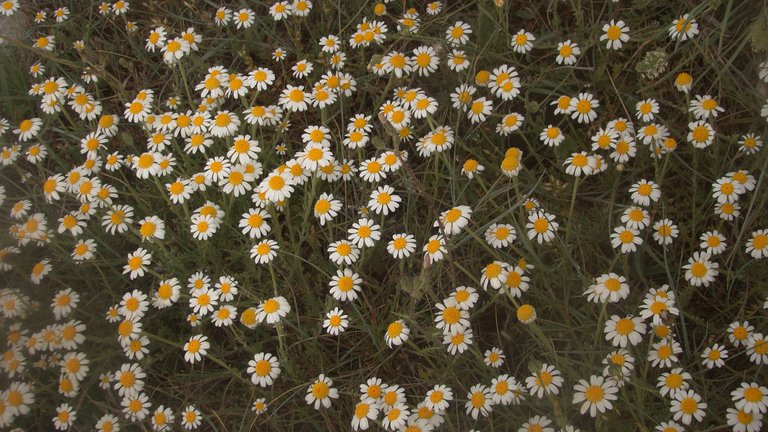
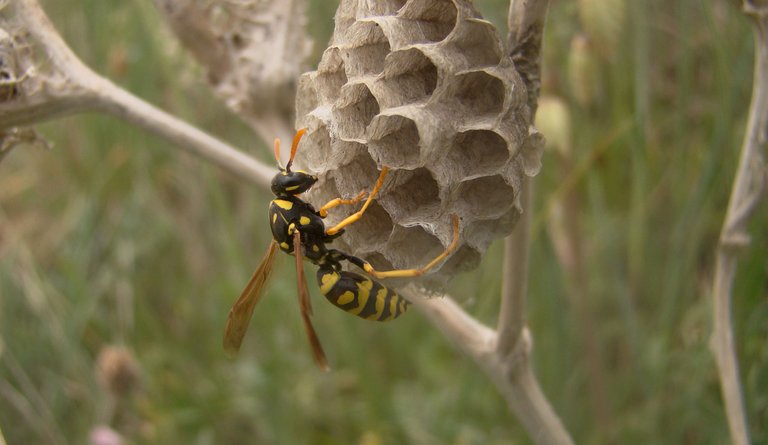

Oh wow such an amazing photography. !wine
Congratulations, @sreypov You Successfully Shared 0.300 WINE With @borjan.
You Earned 0.300 WINE As Curation Reward.
You Utilized 3/3 Successful Calls.
Total Purchase : 22332.150 WINE & Last Price : 0.290 HIVE
HURRY UP & GET YOUR SPOT IN WINE INITIAL TOKEN OFFERING -ITO-
WINE Current Market Price : 0.270 HIVE
Thanks :) Cheers
Hello dear friend @borjan good night
What a beautiful post, I admire the knowledge you have, I appreciate that you let us know the scientific names of each of them. beautiful collection of images. Excellent shots
I take this opportunity to wish you a splendid night
Thank you :)
Amazing
Thanks :)
thanks again for giving support. I can ask no. ID discord, to be able to exchange ideas with Mr. @borjan, and also ask some things
I don't use discord for now. I'm not familiar with discord, have used it only a couple of times last year when I just started on HIVE, which was Steemit back then ... so right now, I think I don't have any ID discord or if I have I don't know anything about it ... but you can always write and ask here in comments, I will gladly answer.
fine, thank you, and I am very happy if you can ask questions with you. Thank you again for the support you have given me, I am also just starting to hive, so I have a lot to learn from you, and other friends too. I am happy to see and read your blog on this hive. and if in Steemit I will also follow you.